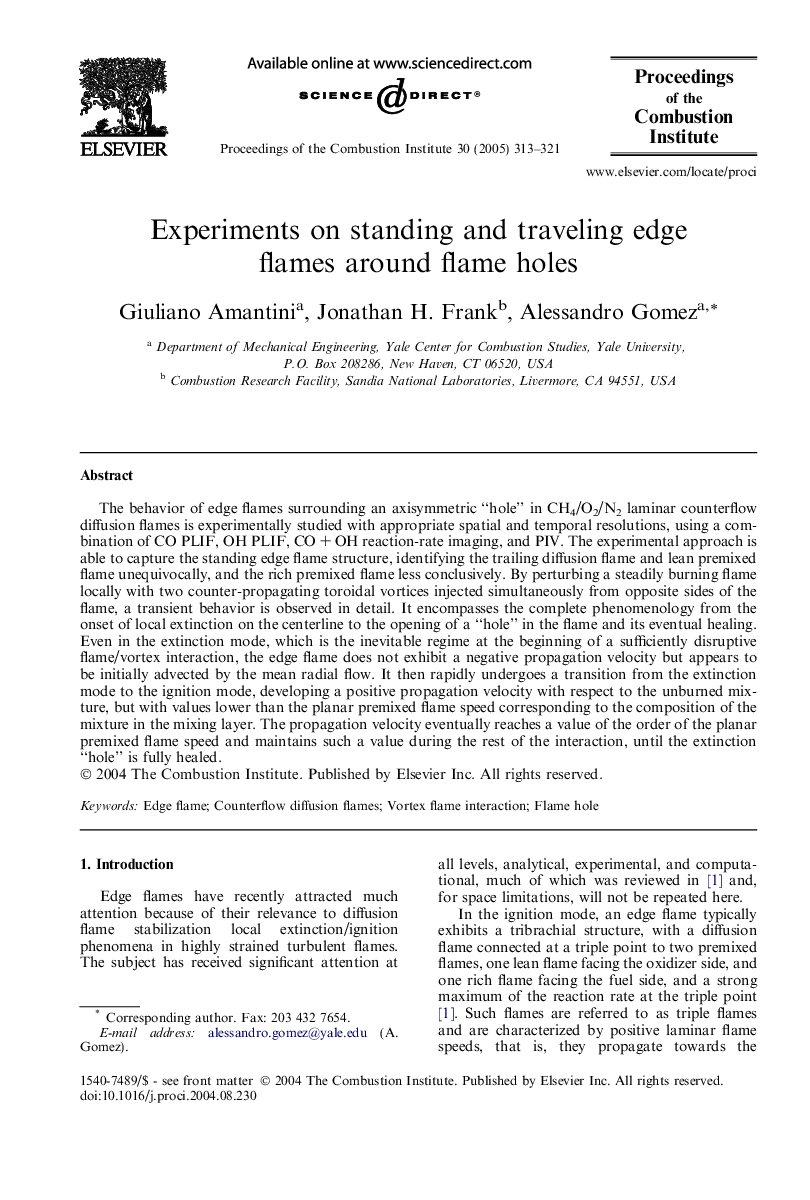| Article ID | Journal | Published Year | Pages | File Type |
|---|---|---|---|---|
| 9637349 | Proceedings of the Combustion Institute | 2005 | 9 Pages |
Abstract
The behavior of edge flames surrounding an axisymmetric “hole” in CH4/O2/N2 laminar counterflow diffusion flames is experimentally studied with appropriate spatial and temporal resolutions, using a combination of CO PLIF, OH PLIF, COÂ +Â OH reaction-rate imaging, and PIV. The experimental approach is able to capture the standing edge flame structure, identifying the trailing diffusion flame and lean premixed flame unequivocally, and the rich premixed flame less conclusively. By perturbing a steadily burning flame locally with two counter-propagating toroidal vortices injected simultaneously from opposite sides of the flame, a transient behavior is observed in detail. It encompasses the complete phenomenology from the onset of local extinction on the centerline to the opening of a “hole” in the flame and its eventual healing. Even in the extinction mode, which is the inevitable regime at the beginning of a sufficiently disruptive flame/vortex interaction, the edge flame does not exhibit a negative propagation velocity but appears to be initially advected by the mean radial flow. It then rapidly undergoes a transition from the extinction mode to the ignition mode, developing a positive propagation velocity with respect to the unburned mixture, but with values lower than the planar premixed flame speed corresponding to the composition of the mixture in the mixing layer. The propagation velocity eventually reaches a value of the order of the planar premixed flame speed and maintains such a value during the rest of the interaction, until the extinction “hole” is fully healed.
Related Topics
Physical Sciences and Engineering
Chemical Engineering
Chemical Engineering (General)
Authors
Giuliano Amantini, Jonathan H. Frank, Alessandro Gomez,
